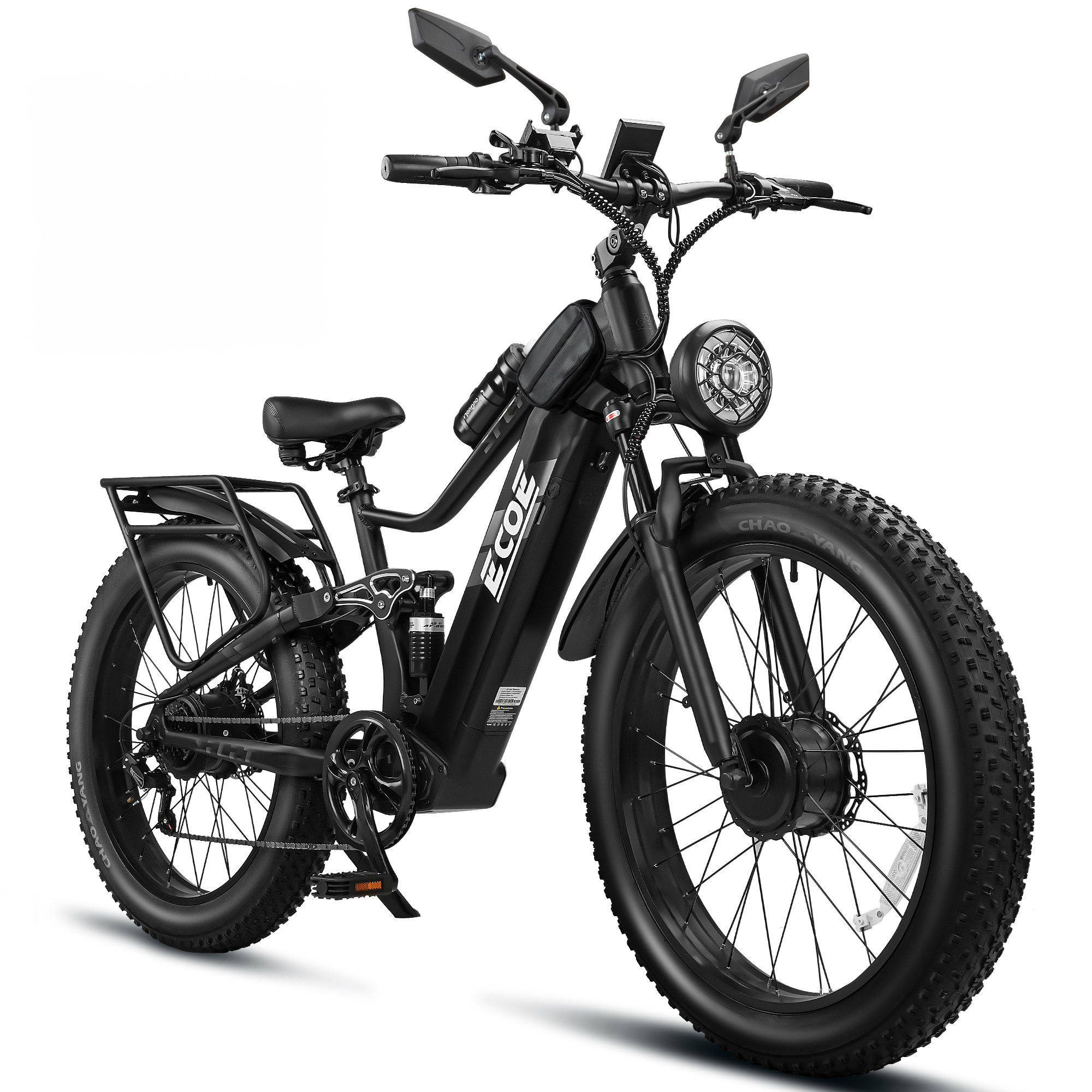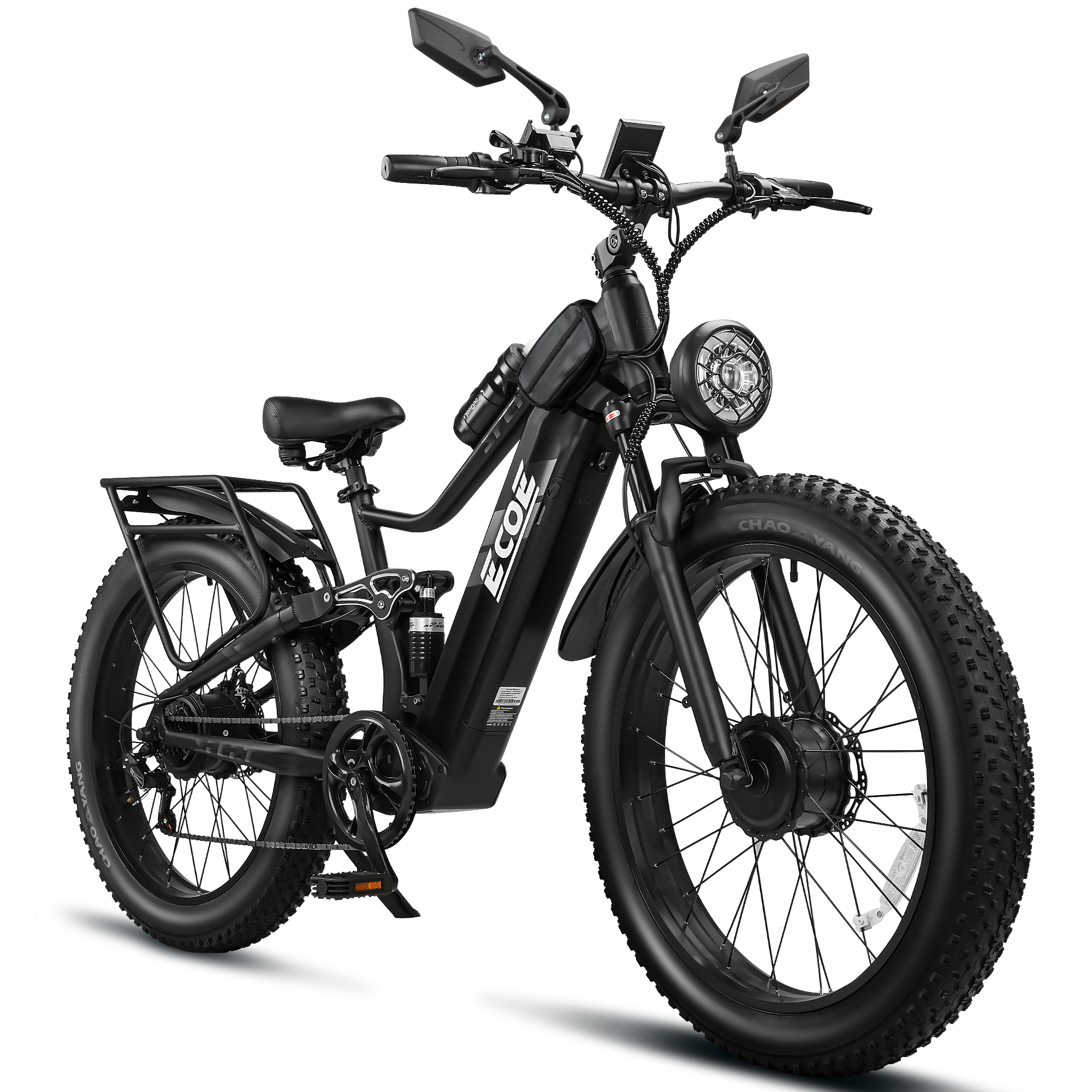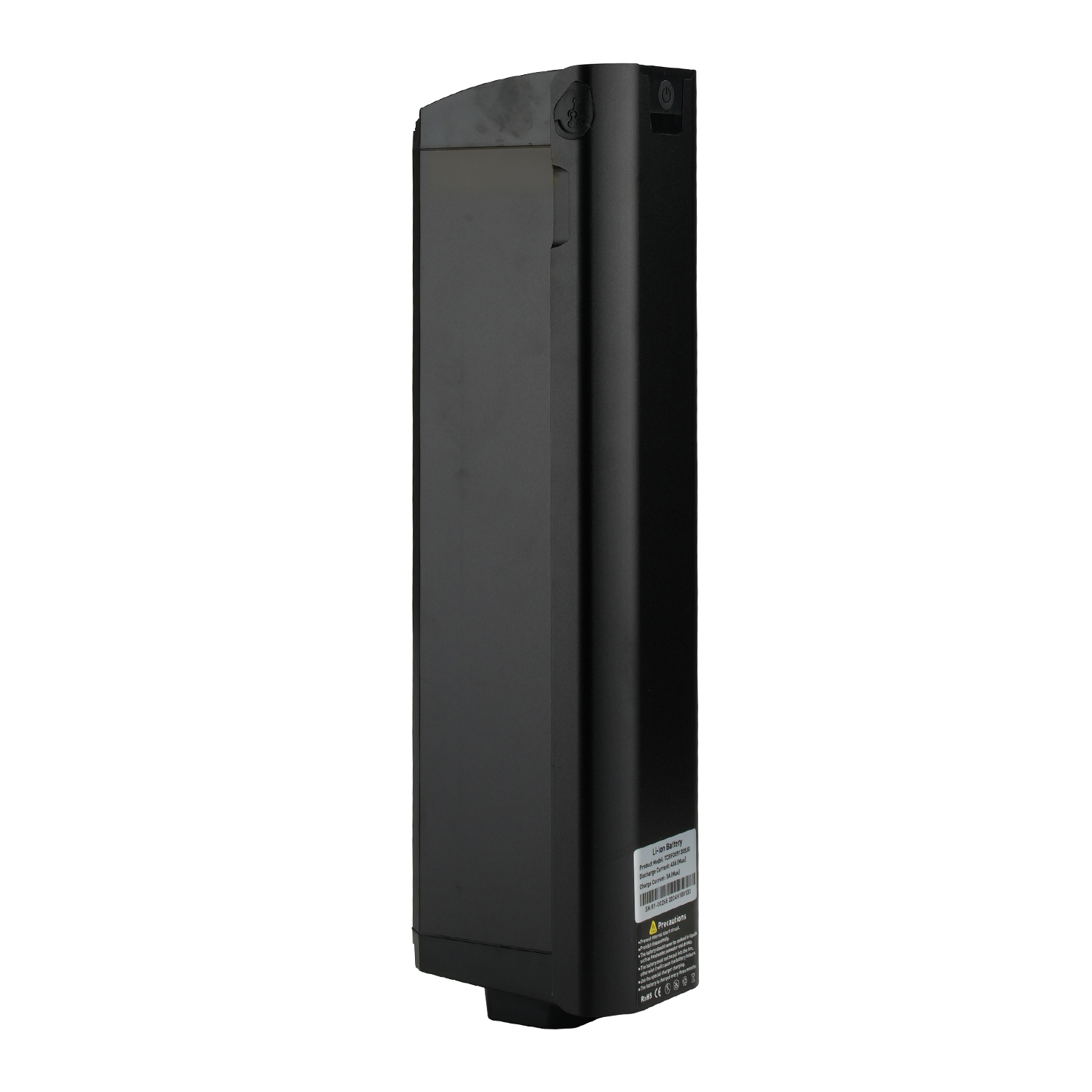
May 31, 2025
|
0 comments
Foldable Electric Bike Maintenance: Essential Care Tips
Owning a foldable electric bike is a game-changer, offering a convenient, eco-friendly, and efficient way to get around. However, like any piece of machinery, your e-bike requires regular maintenance to keep it in top condition and ensure a smooth and safe ride. Whether you use it for commuting, weekend rides, or short trips around the neighborhood, taking good care of your foldable e-bike will extend its lifespan and maintain its performance. In this guide, we’ll walk you through essential care tips for your foldable electric bike, focusing on common areas that need attention and how to keep everything running smoothly. 1. Keep the Battery in Top Shape The battery is one of the most important components of your electric bike, as it powers the motor and dictates your bike’s range. Proper battery care is essential to getting the most out of your bike. Tips: 2. Maintain the Tires for Safe Rides Tires are another essential part of any bike, and they require regular maintenance to ensure smooth and safe rides. For foldable e-bikes, tire pressure and tread condition can significantly affect performance, comfort, and safety. Tips: 3. Keep the Folding Mechanism Smooth One of the unique features of a foldable electric bike is its folding mechanism, which allows you to store the bike easily in small spaces or transport it in your car. Over time, the folding joints and hinges can accumulate dirt, causing them to become stiff or even rusty. Tips: 4. Maintain the Brakes for Safety Your bike’s brakes are crucial for your safety, especially when navigating through traffic or going downhill. Make sure to check your brakes regularly to ensure they are functioning correctly. Tips: 5. Regularly Inspect the Chain and Gear System The chain and gear system is essential for smooth and efficient pedaling. It’s important […]
Read more

May 30, 2025
|
0 comments
Lightest Folding E-Bikes Under 60 lbs: Easy Carry Options
In today’s fast-paced world, commuting has evolved beyond traditional means of transport. More people are turning to electric bikes for a convenient, eco-friendly, and enjoyable way to get from point A to point B. If you’re someone who’s always on the move and needs an easy-to-carry, lightweight option, then a folding electric bike could be your best bet. For those who need a folding electric bike that won’t break your back, we’ve compiled a list of some of the lightest and most efficient models under 60 lbs. These bikes are perfect for those who need to fold and store their bikes in tight spaces, like apartments or car trunks. Let’s dive into the top choices for 2025! 1. Ecoe 5000W Dual Motor Electric Bike Why we love it: The Ecoe 5000W Dual Motor Electric Bike is a perfect balance of performance and portability. Weighing just under 60 lbs, this bike offers amazing power and speed without being too heavy. The dual motor system ensures a smooth ride on various terrains, from city streets to rugged trails. The 26” x 4” fat tires offer great stability, and the full suspension provides extra comfort for longer rides. Not only is it light, but its foldable design means you can easily stow it away when you need to, without taking up too much space. Plus, with a powerful 60V 32AH battery, you can travel up to 80 miles, making it perfect for commuting or weekend getaways. Whether you’re heading to work, running errands, or exploring, this e-bike packs a punch! 2. Rad Power Bikes RadMini 4 The RadMini 4 is another solid choice for riders who want a folding electric bike that’s not too heavy. While it’s just above the 60-lb mark, it offers an excellent mix of performance and compactness. The 750W […]
Read more
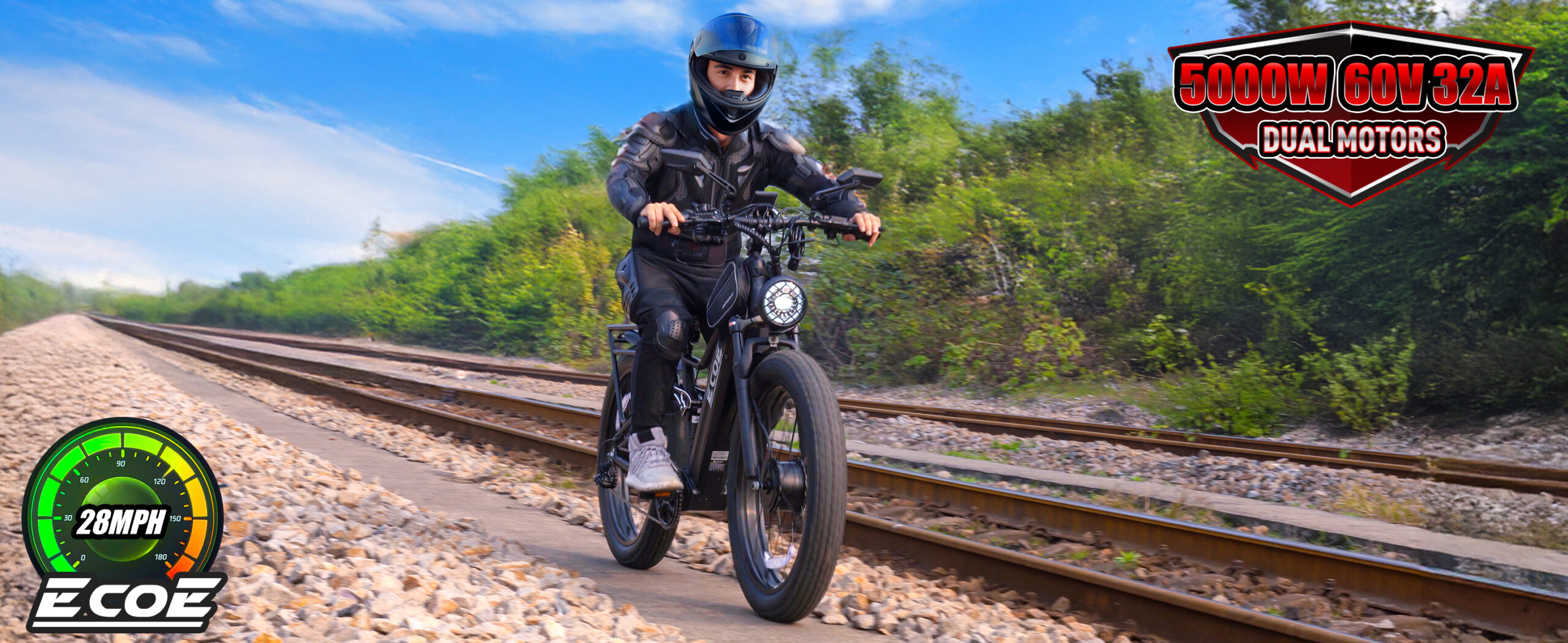
May 29, 2025
|
0 comments
Smart Folding Electric Bikes with App Connectivity
With the advancement of technology, smart electric bicycles have evolved from mere means of transportation to high-tech products integrating intelligent control, data tracking, remote management, and more. Smart folding electric bicycles, in particular, offer the added convenience of foldable storage and can be connected to a smartphone app, allowing you to better manage your cycling data, set personalized riding modes, and even control the e-bike remotely. These smart electric bicycles are gradually changing the way we ride. Today, let’s take a look at some smart folding electric bicycles that not only excel in folding functionality but also enhance the cycling experience through their smartphone apps. Smart folding electric bicycles, connected via an app, not only allow you to track your cycling data in real time but also enable you to adjust riding modes and settings according to your personal needs, making each ride more relaxed and efficient. Whether it’s the Ecoe 5000W dual-motor electric bike or other smart folding electric bikes, they all offer an unparalleled smart experience for your rides. You can manage your cycling through your smartphone anytime, anywhere, and enjoy the convenience and fun brought by technology. If you are looking for a folding electric bike that can be easily controlled through a smartphone, the models recommended above are definitely worth considering.
Read more
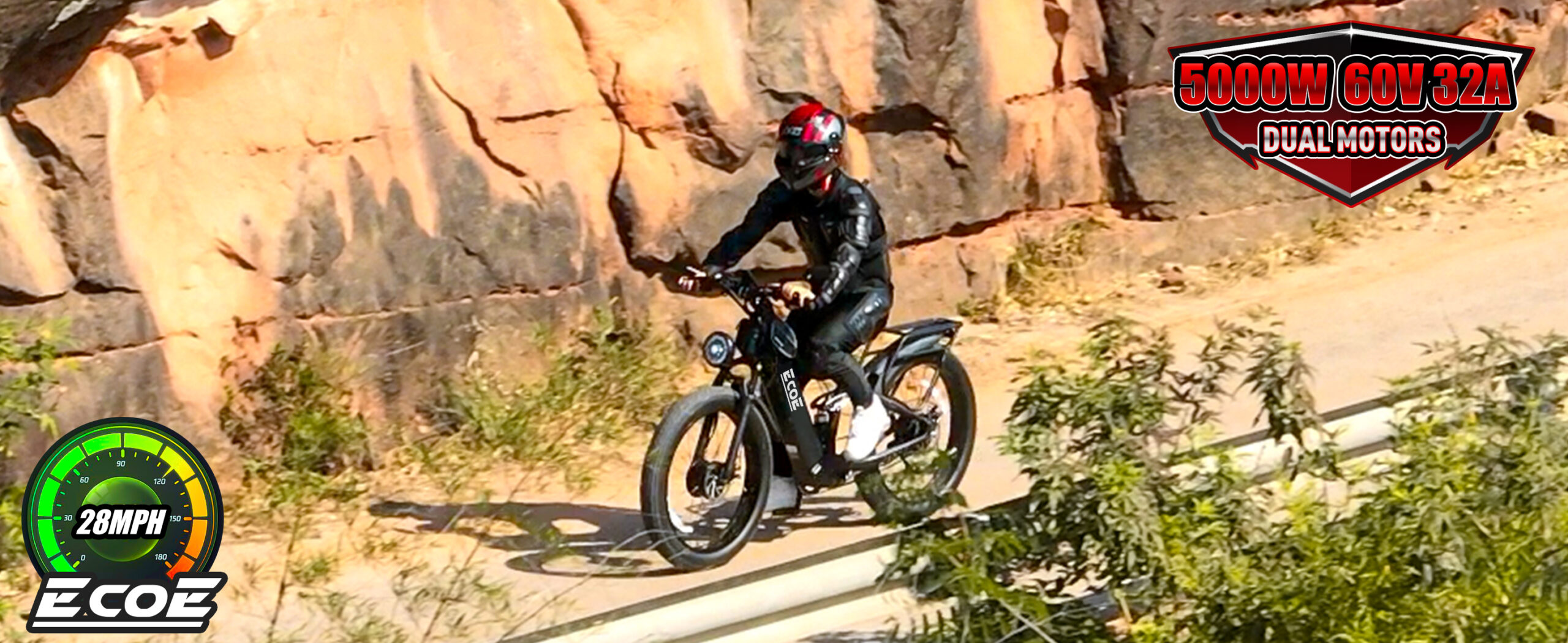
May 28, 2025
|
0 comments
Heavy-Duty Folding E-Bikes for Mountain Trails
If you are a mountain biking enthusiast who loves to challenge rugged mountain trails and wants an electric bicycle that can fold easily and be stored conveniently, then a heavy-duty folding electric bicycle is the ideal choice for you. These electric bicycles can handle complex mountain environments and fold compactly without taking up too much space, allowing you to store them in your car and explore more hidden outdoor destinations. Let’s take a look at some heavy-duty folding electric bicycles suitable for mountain biking! Choosing a heavy-duty folding electric bicycle suitable for mountain biking allows you to enjoy all-terrain adventures without taking up too much space. These models not only offer strong power and comfort but also fold easily, making it convenient for you to take them to any mountain adventure destination. If you are looking for an electric folding bicycle that can handle challenges and is easy to store, these recommended models will surely meet your needs. Whether it is the Ecoe 5000W Dual Motor Folding Electric Bicycle or other mountain-specific electric bicycles, they will provide you with an unparalleled riding experience, helping you conquer more rugged mountain trails.
Read more
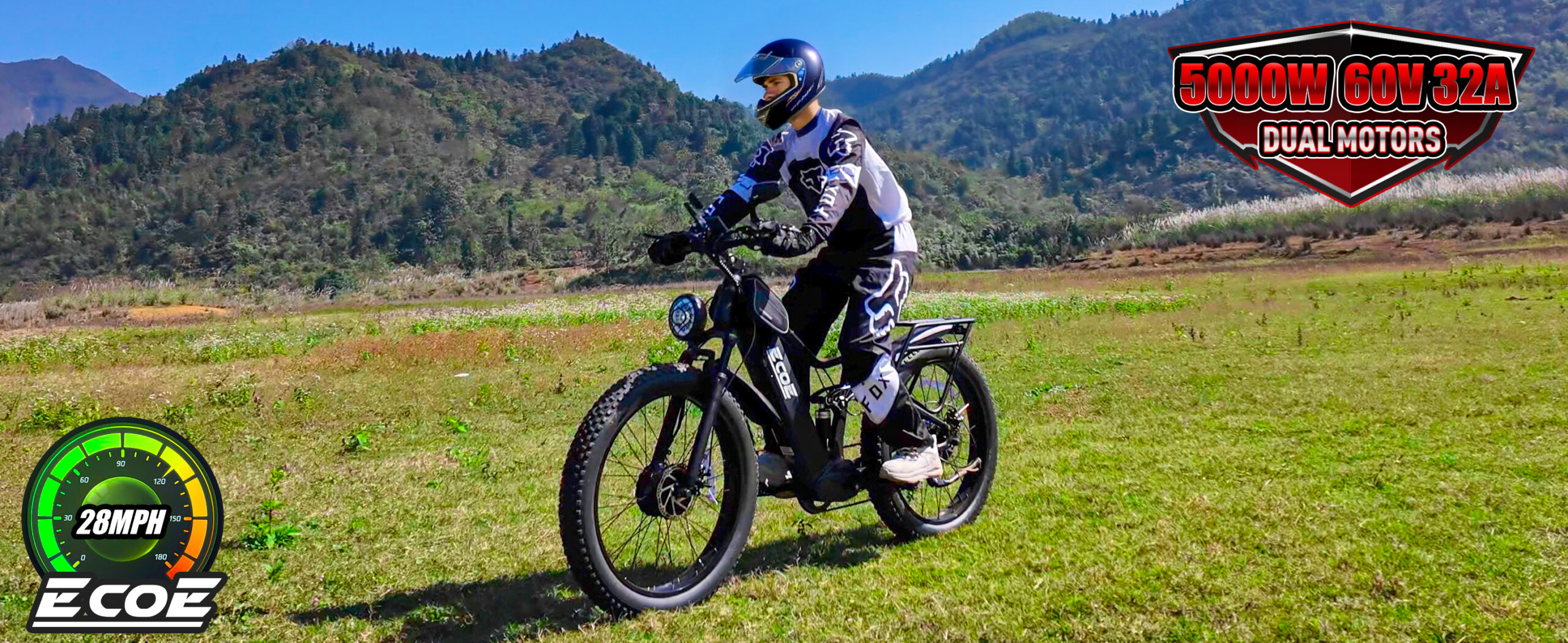
May 28, 2025
|
0 comments
Compact Folding Electric Bikes That Fit in Car Trunks
In modern life, many people hope to enjoy the pleasure of cycling while driving a car. Choosing a compact folding electric bicycle can not only meet the needs of urban commuting but also be easily placed in the trunk of a car, making it convenient to take anywhere. So, which electric bicycles excel in compactness and folding, are suitable for placing in a car, and also offer comfortable riding and high performance? Let’s take a look at these recommended models! 1、Ecoe 5000W Dual Motor Electric Bike Price: $1,599 Top Speed: 28 MPH (unlockable for higher speed) Range: Up to 80 miles Battery Capacity: 60V 32AH removable battery Weight: Approximately 60 pounds Advantages: Compact folding design, easy to fit into most car trunks. Suitable for various terrains, with a powerful full suspension system for a comfortable ride. Dual motors provide stronger power on mountains or rugged terrain. High-capacity battery for long rides, ideal for weekend outings or long-distance cycling. Why Recommended: This electric bicycle is not only suitable for urban commuting but also capable of handling complex terrains. Its removable battery allows easy charging, storage, and transportation. 2、Brompton Electric Folding Bike Price: Around $3,799 Top Speed: 15.5 MPH Range: Up to 50 miles Battery Capacity: 36V lithium battery Weight: Approximately 35 pounds Advantages: Extremely compact folding design, small and easy to carry when folded. High-quality aluminum alloy frame, lightweight and durable. Electric assistance for long rides, reducing leg strain. Why Recommended: As a globally renowned folding electric bicycle brand, Brompton excels in portability and quality. This model can be easily placed in a car trunk and is suitable for urban commuting and travel. 3、GoCycle GX Price: $3,299 Top Speed: 20 MPH Range: Up to 40 miles Battery Capacity: 500Wh battery Weight: Approximately 38 pounds Advantages: Extremely compact when folded, perfect for […]
Read more

May 20, 2025
|
0 comments
The development history of steel frames of magnesium – alloy frames for electric bicycles
The EcoE 5000W electric bike Powerful Motor: EcoE is equipped with a 60V 5000W high-speed brushless motor. Due to different loads and road conditions, the electric bike drive system provides adjustable assistance, allowing you to stay healthy, relax, and exercise.Accessories: This electric bike accessory set includes a rearview mirror, water bottle holder and bottle, a sturdy phone mount, and a waterproof phone pouch. The reinforced cargo rack allows you to easily carry extra items needed for your ride. Additionally, if you need more accessories, you can purchase a detachable storage rack, passenger safety seat, trailer, and more.60V 32AH Battery: The bike is equipped with a high-capacity, removable 32AH battery, providing longer range per charge and over 1000 charge cycles. With pedal assist, the fat tire e-bike can travel 35-80 miles, depending on riding mode, load, and terrain. You can also purchase a spare battery for extended trips.Comfort and Versatility: This fat tire electric bike comes with dual front suspension and rear shocks to reduce impact and strain during rides. Its 26-inch wheels, 4-inch tires, and SHIM 7-speed system offer excellent grip across diverse terrains. Front and rear disc brakes ensure safe, responsive stopping, whether on mountain trails or city streets. – The corresponding table is as follows: Stage Time Development Early exploration stage 1980s Frank Kirk applied magnesium to bicycle frames and used them in the Tour de France, facing welding – technology problems. Setback stage 1990s – early 21st century In the early 1990s, the Kirk Company’s die – casting production of magnesium – alloy frames was a commercial failure, and they were rarely seen in the market for many years. In the early 21st century, Pinarello, Merida, etc. tried to promote them but gave up due to welding difficulties and performance concerns. Redevelopment stage 2010 – present Around 2010, China formed relevant […]
Read more
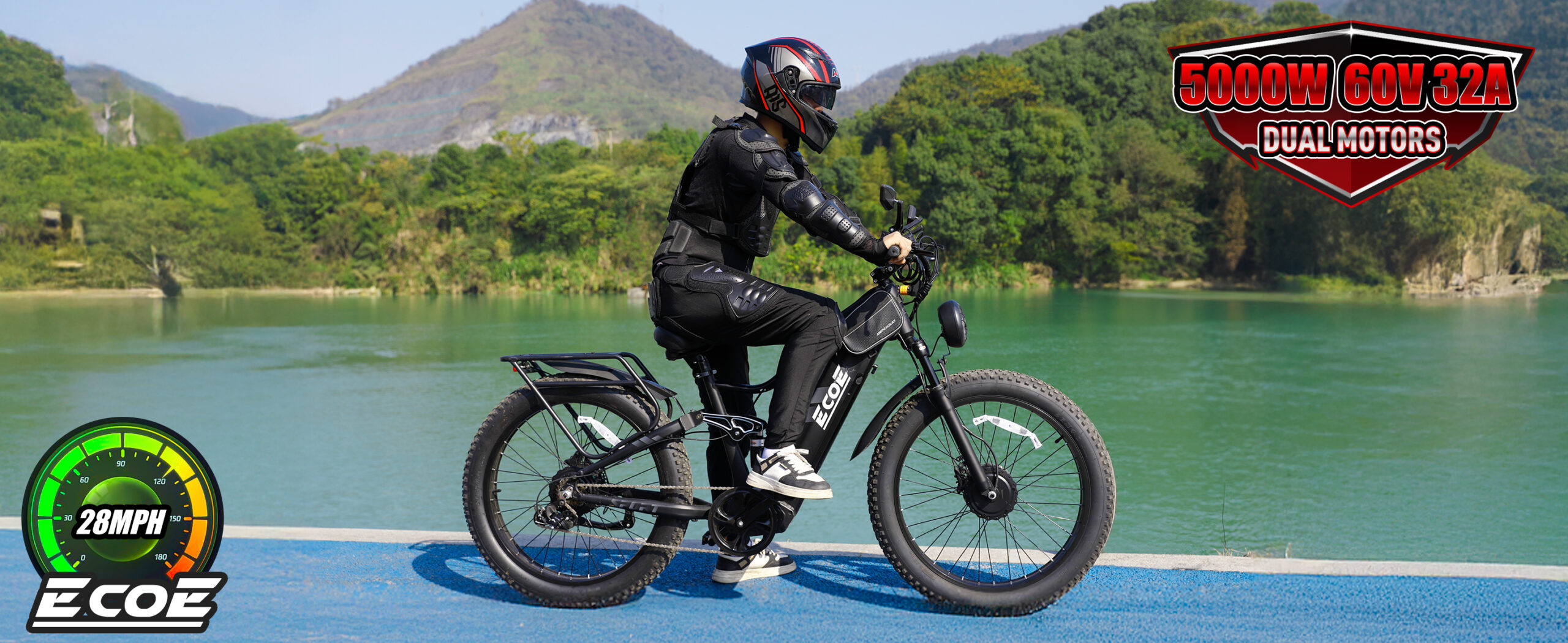
May 20, 2025
|
0 comments
The development history of steel frames of titanium alloy frames for electric bicycles
The EcoE 5000W electric bike Powerful Motor: EcoE is equipped with a 60V 5000W high-speed brushless motor. Due to different loads and road conditions, the electric bike drive system provides adjustable assistance, allowing you to stay healthy, relax, and exercise.Accessories: This electric bike accessory set includes a rearview mirror, water bottle holder and bottle, a sturdy phone mount, and a waterproof phone pouch. The reinforced cargo rack allows you to easily carry extra items needed for your ride. Additionally, if you need more accessories, you can purchase a detachable storage rack, passenger safety seat, trailer, and more.60V 32AH Battery: The bike is equipped with a high-capacity, removable 32AH battery, providing longer range per charge and over 1000 charge cycles. With pedal assist, the fat tire e-bike can travel 35-80 miles, depending on riding mode, load, and terrain. You can also purchase a spare battery for extended trips.Comfort and Versatility: This fat tire electric bike comes with dual front suspension and rear shocks to reduce impact and strain during rides. Its 26-inch wheels, 4-inch tires, and SHIM 7-speed system offer excellent grip across diverse terrains. Front and rear disc brakes ensure safe, responsive stopping, whether on mountain trails or city streets. – The corresponding table is as follows: Stage Time Development Early exploration stage 1960s – 1980s In the 1960s, the UK’s Speedwell introduced the first titanium alloy frame. In the 1970s, the US’s Teledyne launched mass – produced frames. The bicycle industry began to explore the manufacturing of titanium alloy frames. Development was slow due to technical and cost issues. Rapid development stage Late 1980s – 1990s In the mid – 1980s, the application developed rapidly. In the late 1980s, it was widely used in bicycle frames. In the 1990s, it emerged in the high – end bicycle market, was used in famous races, […]
Read more
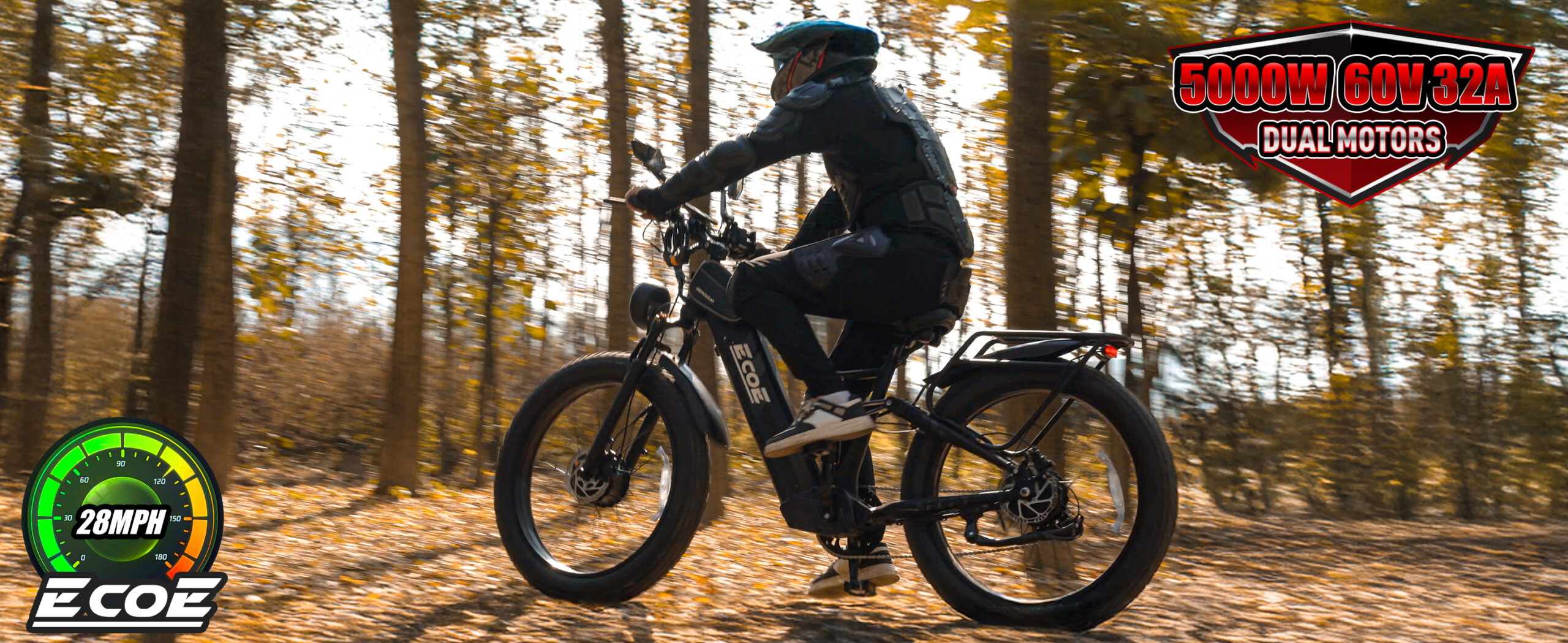
May 19, 2025
|
0 comments
The development history of steel frames of carbon – fiber frames for electric bicycles
The EcoE 5000W electric bike Powerful Motor: EcoE is equipped with a 60V 5000W high-speed brushless motor. Due to different loads and road conditions, the electric bike drive system provides adjustable assistance, allowing you to stay healthy, relax, and exercise.Accessories: This electric bike accessory set includes a rearview mirror, water bottle holder and bottle, a sturdy phone mount, and a waterproof phone pouch. The reinforced cargo rack allows you to easily carry extra items needed for your ride. Additionally, if you need more accessories, you can purchase a detachable storage rack, passenger safety seat, trailer, and more.60V 32AH Battery: The bike is equipped with a high-capacity, removable 32AH battery, providing longer range per charge and over 1000 charge cycles. With pedal assist, the fat tire e-bike can travel 35-80 miles, depending on riding mode, load, and terrain. You can also purchase a spare battery for extended trips.Comfort and Versatility: This fat tire electric bike comes with dual front suspension and rear shocks to reduce impact and strain during rides. Its 26-inch wheels, 4-inch tires, and SHIM 7-speed system offer excellent grip across diverse terrains. Front and rear disc brakes ensure safe, responsive stopping, whether on mountain trails or city streets. – Early Exploration and Application in the Bicycle Field (1950s – 1980s) Initial Application and Technological Development (late 1980s – 1990s) Gradual Popularization and Market Expansion (1990s – early 21st century) Wide Application and Innovative Development (early 21st century – present) The following is a table about the development history of carbon – fiber frames for electric bicycles: Time Period Development Characteristics Main Events 1950s – 1960s Research, development, and industrial production of carbon – fiber materials The US military developed high – performance carbon fiber, and industrial production was achieved in the 1960s. Countries successively mastered the relevant technologies. 1970s Attempts to apply […]
Read more

May 19, 2025
|
0 comments
The development history of steel frames of aluminum – alloy frames for electric bicycles
The EcoE 5000W electric bike Powerful Motor: EcoE is equipped with a 60V 5000W high-speed brushless motor. Due to different loads and road conditions, the electric bike drive system provides adjustable assistance, allowing you to stay healthy, relax, and exercise.Accessories: This electric bike accessory set includes a rearview mirror, water bottle holder and bottle, a sturdy phone mount, and a waterproof phone pouch. The reinforced cargo rack allows you to easily carry extra items needed for your ride. Additionally, if you need more accessories, you can purchase a detachable storage rack, passenger safety seat, trailer, and more.60V 32AH Battery: The bike is equipped with a high-capacity, removable 32AH battery, providing longer range per charge and over 1000 charge cycles. With pedal assist, the fat tire e-bike can travel 35-80 miles, depending on riding mode, load, and terrain. You can also purchase a spare battery for extended trips.Comfort and Versatility: This fat tire electric bike comes with dual front suspension and rear shocks to reduce impact and strain during rides. Its 26-inch wheels, 4-inch tires, and SHIM 7-speed system offer excellent grip across diverse terrains. Front and rear disc brakes ensure safe, responsive stopping, whether on mountain trails or city streets. – Early Exploration (1970s – 1980s) During this period, the bicycle industry began to gradually focus on aluminum – alloy materials. At that time, aluminum alloys were mainly tested on some high – end bicycles or racing bicycles due to their potential advantages such as light weight and corrosion resistance. However, limited by the material cost, processing technology, and market awareness at that time, the application of aluminum – alloy frames on electric bicycles was very limited. The electric – bicycle industry as a whole was still in its infancy, mainly focusing on the research and development and improvement of key technologies such as […]
Read more
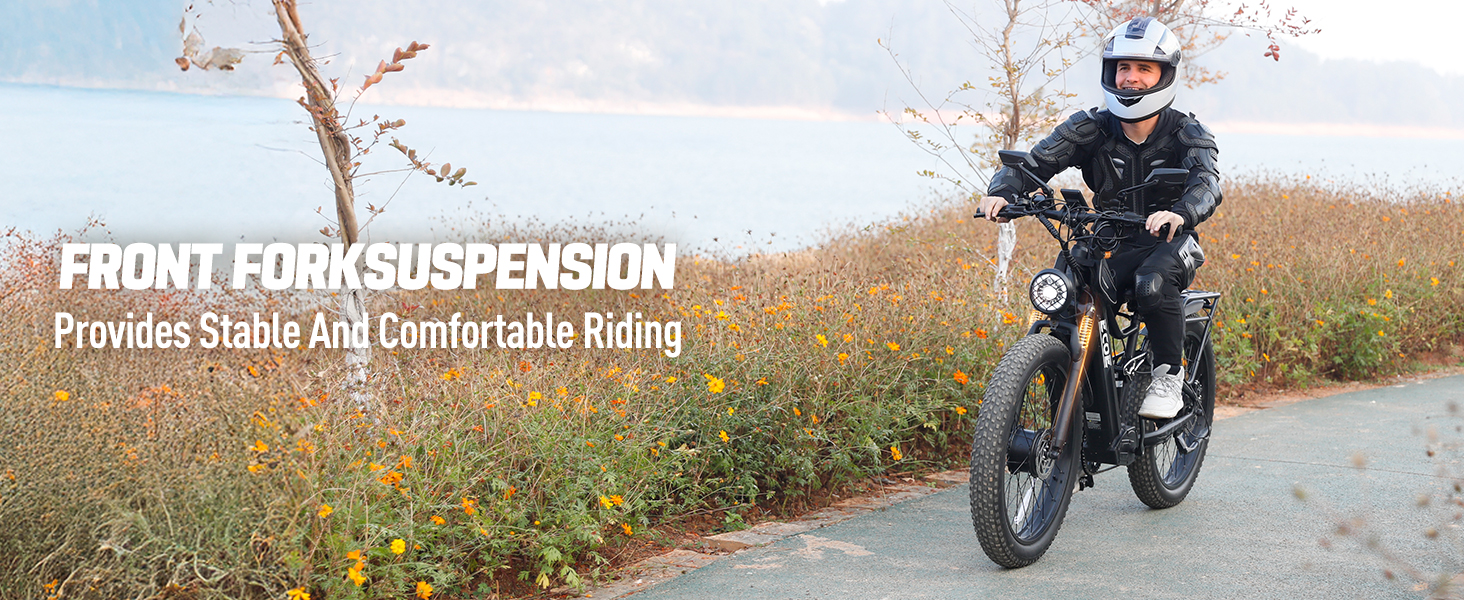
May 18, 2025
|
0 comments
The development history of steel frames for electric bicycles
The EcoE 5000W electric bike Powerful Motor: EcoE is equipped with a 60V 5000W high-speed brushless motor. Due to different loads and road conditions, the electric bike drive system provides adjustable assistance, allowing you to stay healthy, relax, and exercise.Accessories: This electric bike accessory set includes a rearview mirror, water bottle holder and bottle, a sturdy phone mount, and a waterproof phone pouch. The reinforced cargo rack allows you to easily carry extra items needed for your ride. Additionally, if you need more accessories, you can purchase a detachable storage rack, passenger safety seat, trailer, and more.60V 32AH Battery: The bike is equipped with a high-capacity, removable 32AH battery, providing longer range per charge and over 1000 charge cycles. With pedal assist, the fat tire e-bike can travel 35-80 miles, depending on riding mode, load, and terrain. You can also purchase a spare battery for extended trips.Comfort and Versatility: This fat tire electric bike comes with dual front suspension and rear shocks to reduce impact and strain during rides. Its 26-inch wheels, 4-inch tires, and SHIM 7-speed system offer excellent grip across diverse terrains. Front and rear disc brakes ensure safe, responsive stopping, whether on mountain trails or city streets. – In the early days, steel was used in the manufacturing of bicycle frames. After the emergence of electric bicycles, steel frames were widely adopted due to their many advantages. Before the 1990s, chromium – molybdenum steel – made frames were the mainstream in bicycle frames, and most electric bicycle frames also used chromium – molybdenum steel. Chromium – molybdenum steel is an alloy steel made by adding two elements, molybdenum (Mo) and chromium (Cr), to carbon steel. It has good torsion and tensile properties, and high temperatures during welding do not affect the material. Moreover, it is inexpensive. At that time, the main […]
Read more





